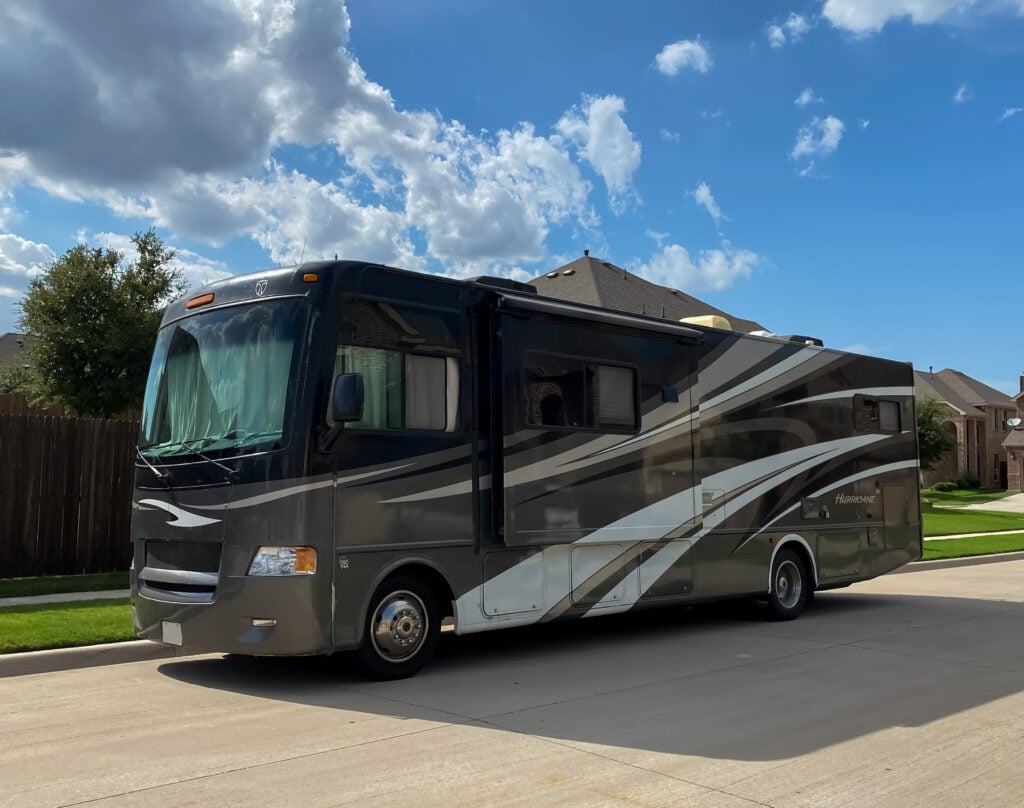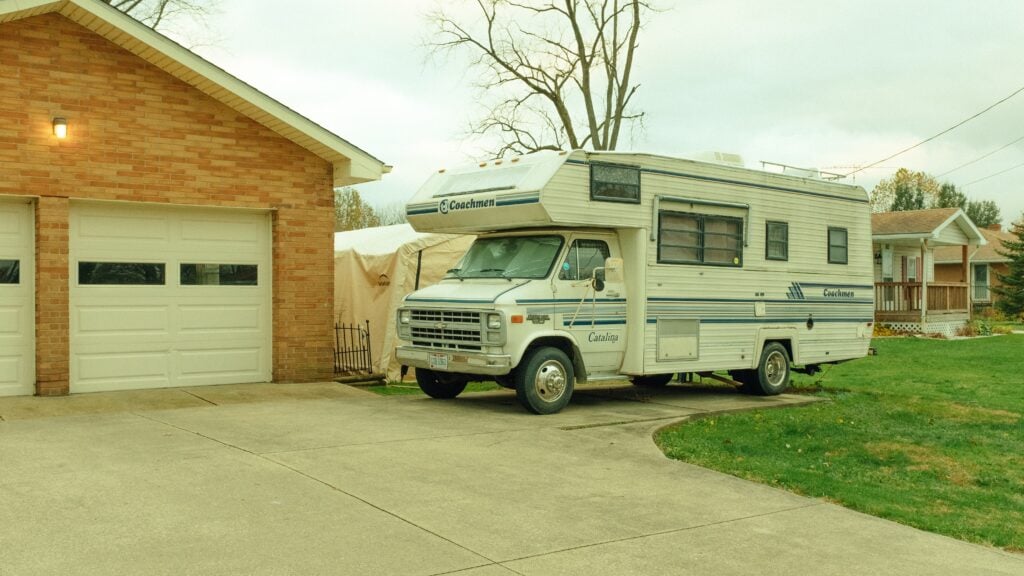
Ready to Start Used RV Shopping?
RV sales have gone through the roof in recent years. Because the demand for RVs has gone up so much, and there is limited supply due to back orders caused by the pandemic, the prices of RVs have skyrocketed. For this reason, many people have chosen to skip the dealerships and look instead for a cheaper used RV for sale.
This is a fantastic idea for a number of reasons. For one thing, many of the RVs that were purchased as impulse buys in the past year are now being sold at a significant discount. Another reason buying a used RV is an excellent idea is because the value of a brand-new rig drops dramatically the moment it is driven off the lot. Buying used allows you to avoid this huge loss. Finally, we love buying used because we know that all of the initial issues new RVs tend to come with have already been addressed.
What to know when browsing used RVs for sale
All that said, there are definitely some things you should know before you start shopping for a used RV for sale. Using the tips below will help ensure you get exactly what you want at a fair price.
1. Know what you want
Before you even begin to start shopping, figure out exactly what you’re looking for in an RV.
First, know whether you want a drivable RV or a towable. Is a Class C motorhome more your style, or do you prefer the big Class A RVs? Maybe you like the super nimble Class B vans, or perhaps a spacious fifth wheel trailer would be more comfortable for you. For many, a simple bumper-pull trailer or truck camper does the job just fine.
Aside from RV type, you’ll also want to consider what kind of floor plan you’re looking for and what your must-have features are. Consider the type of camping you’ll be doing, how many people will be going, and how often you’ll go. Also think about what kind of vehicle you’ll be towing behind you or towing with.
Another thing to consider is how old of an RV do you want to purchase? Do you want an RV that’s only a couple of years old, or would a vintage rig in good shape be okay? Keep in mind some RV parks have a 10-year rule and do not allow older rigs into their park.
Look at several models with the things you want, and get a feel for what’s out there and what you might expect to pay. You might even consider going to an RV show to see RVs in person. Make notes of the makes and models you find that suit your needs so you can reference them later.
Once you’ve looked at a number of rigs and prices, decide on a reasonable budget that your finances can handle and stick to it.
2. Shop online
Once you have a clear idea of what you want and the budget you’re working with, hop online to start shopping. Rather than going to dealerships, we recommend looking at Craigslist, Facebook Marketplace, RVezy , National Vehicle, and RV Trader.
As you shop, add any rigs you like to your “favorites” list, and if something looks particularly appealing, go look at it in person. However, never let someone pressure you into buying on the spot. If you absolutely love what you see, ask if the seller will hold the RV for you until you can inspect it properly. In some cases, you might have to pay a deposit to show you are genuinely interested.

3. Be patient
It’s unlikely that you’ll find exactly what you want the first time you hop online to look for your used RV for sale. This doesn’t mean you should buy whatever you can find. Instead, be patient and stick to your guns.
All of that research you did finding exactly the right rig should not be for nothing, and your budget is obviously important too. The perfect RV will crop up eventually. Keep checking on a daily basis until you find it.
4. Be willing to travel
As you’re searching for the ideal used RV for sale, consider expanding your search radius to include nearby towns and cities. The more areas you search, the more likely you will find the rig you want in a reasonable amount of time.
Most people will agree that getting the perfect RV is well worth a drive of a few hours. This is especially true since you’re likely to be taking the RV on trips in the future anyway.
5. Inspect the RV
Nobody should ever buy any RV sight unseen. Not only that, but when you do see the RV, you will want to very carefully inspect every single nook and cranny. This goes for both new and used RVs, but is especially important when it comes to the latter. This is because most used rigs do not come with any sort of warranty and have been on the road for a bit already.
When inspecting a used RV for sale, check all of the lights, outlets, and electric appliances to be sure they are in good working order. Use the water heater, propane fridge, and the propane stove and oven to ensure they are working as well.
Check the tires for wear, and ask for a discount if they must be replaced. Look at the axles to ensure they’re straight and in good shape. Also, look at the entire undercarriage, checking for rust and damaged metal. Check the water system too; ensure that all faucets work, and look under the rig and underneath cabinets for leaks from water lines, tanks, and/or drain pipes.
6. Look for water damage
Finally, you will need to look for water damage. This is the most important and most difficult part of any RV inspection, as it means looking absolutely everywhere.
- Sniff the air for the scent of mildew or mold.
- Look at the ceiling for discoloration or bubbling that would indicate a water leak.
- Check the roof for damaged seals, cuts in the roofing material, soft spots, and bubbling.
- Inspect all walls and corners (especially near the floor) for soft spots and bubbling. Make sure to get into storage bays and cabinets and do the same.
- Ripples or bubbles in wallpaper, especially under windows, are likely caused by leaks.
- Delamination (bubbling of the exterior of the RV) is also caused by leaking. Damage to the seals on the outside of the RV would almost certainly lead to a leak.
If you find signs of leaking, we recommend skipping the purchase. RV water damage can get bad quickly and is insanely costly and difficult to fix.
Some people feel that inspecting an RV on their own isn’t enough, so they call in a professional. This isn’t a bad idea if you aren’t familiar with RVs and aren’t confident in your inspection skills.
One of the best parts about RVing is engaging with the community of traveling enthusiasts. iRV2.com allows folks to chat with other RVers online, and get other perspectives on everything RVing, including products, destinations, RV mods, and much more.

I found my RV halfway around the country. It was 1,200 miles from home. I tried to get an inspector to look at it and found that to be an education in inspectors. In the long run, I ended not getting an inspector because he wanted $1500 to do so and I didn’t even think his qualifications were up to par. All of this happened after every single RV I wanted was sold within hours. It is rough out there.
When inspecting a used RV for sale, be sure to look for stress cracks in all frame members as well as cracked welds. I recently spent over $400 at a frame shop to have stress fractures repaired on my 2010 eighteen foot lightweight camper trailer. I suspect that manufacturers are making frames too lightweight in order to save on weight. I was suprised to find so many stress fractures and a sagging cross member that was poorly designed, it has a big rectangular opening in it that left little metal and thus fractured at all four corners of the opening resulting in the piece sagging, underneath the weight of the refrigerator. Interesting that nothing passed through this opening. Just as in aircraft framing, no opening in a frame member should have square corners, corners should be rounded, thus dramatically reducing the chance for corner stress fractures.
After suggestion number 1 and number 2, should be “Know what you are willing to pay”
To Pam’s comment, yes, the prices for RV’s have sky rocketed in the past eighteen months!
An RV (albeit a camper, or Class A motorhome…) that was on the market for fifteen thousand dollars, two years ago, now has a listing price of twenty five thousand dollars (and is still two years older than it was then!) Demand is the only influence on RV’s, in the time of Covid…
The only way you can combat these unreasonable price hikes, is to have “cash in hand”!
Now, I know it is unimaginable to think about someone to walking around with fifteen thousand dollars in their pocket (and pretty dangerous too), but… If you have set a budget for your camper search and, after you’ve done your research, you find what you want, and know the price you’re willing to pay, but has an unreasonably high price, make your counter offer, knowing you have a sizeable chunk of money in your pocket for a deposit, (also knowing you can get to the remaining balance within a few minutes).
Generally, (dealers excepted) once a seller has actually felt the cash in their hand, they will accept the negotiated price… (even if they say there are a dozen other people waiting to pay the full asking…)
It’s like the old saying goes… “A bird in the hand…” (plus the allure of a seller, walking away from their sale, with cash, still has that kind of power!)